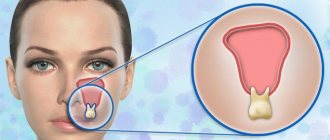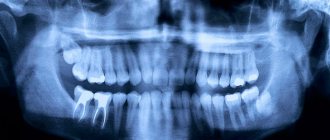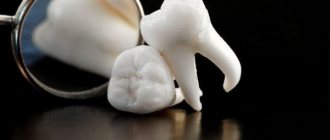Anesthesia methods in dentistry
All methods of anesthesia in dentistry are divided into general and local. General anesthesia is general anesthesia and intravenous sedation. That is, drugs are used that affect the entire body, and not just the oral cavity. This is a standard general anesthesia that is used not only in dentistry, but also in other branches of medicine. Local anesthesia is the familiar “freezing”, administered by injection. Xenon therapy can also be used in combination with general or local anesthesia.
Local anesthesia is most often used in dentistry. There are many indications for its use. These include:
- cleaning teeth from deposits;
- dental treatment of any complexity;
- removal of dental units;
- performing manipulations on the gums;
- surgical manipulations in the oral cavity;
- implantation or preparatory measures (but in some cases general anesthesia is recommended).
Local anesthesia has obvious advantages. The drugs are safe, they do not negatively affect the body, do not cause side effects and are eliminated quickly. At the same time, the techniques completely relieve pain of any nature.
Local application of anesthetics involves the use of special syringes with a very thin needle to avoid pain during injection. Main types of local anesthesia:
- Applique. It involves applying a pain-relieving anesthetic in the form of a gel. It is used primarily for oral hygiene and removal of deposits, especially if ultrasound is used for this. Its effect is short-lived.
- Infiltration. This is the standard injection “freezing”, which is carried out in almost all procedures. The injection can be injected into the mucosal tissue, bone or periosteum. In this case, the dentist must take into account the anatomy of the upper and lower jaw.
- Conductor. Used for long and complex surgical interventions. An anesthetic with a high content of the active component is selected. It is injected directly into the nerve, so the effects of anesthesia last longer and affect a larger area. Conductive anesthesia can be used during operations, tooth extraction, and when installing several implants at the same time.
Difficulty in achieving pulp anesthesia in mandibular teeth
Author: Unni Krishnan
Translation: Gavryushina Anna
Failure to obtain adequate pulpal anesthesia is the most common adverse outcome of local anesthesia in endodontics and is often associated with the administration of mandibular anesthesia. Although it goes without saying that absence of lip numbness is a clear sign of absence of pulpal anesthesia, absence of pulpal anesthesia may occur despite the presence of lip numbness, especially in mandibular posterior teeth with symptomatic irreversible pulpitis. Lack of pulpal anesthesia is often objectively verified as failure to obtain two consecutive readings of 80 using an electrical pulp tester or after prolonged application of a cold stimulus. However, every endodontist knows that the pulp can be sensitive even if these tests confirm complete anesthesia. Many studies have shown the inadequacy of mandibular anesthesia to provide sufficient pulpal anesthesia for restoration of about 50% of healthy anterior teeth, which should be anesthetized with mandibular anesthesia. The depth of pulpal anesthesia will decrease with pulpitis and other local factors.
Lack of lip numbness is a sign of improper anesthesia technique and is reported to occur in 5-23% of cases. Although lip numbness usually occurs 4–6 minutes after mandibular anesthesia, pulpal anesthesia in the mandibular first molar usually takes longer (up to 9 minutes). Lower central incisors may require more time (up to 19 minutes). In addition, 12–20% of patients may experience a slow onset of pulpal anesthesia, as determined by electrical pulp test readings occurring after 15 minutes. Thus, sufficient time must be allowed for pulpal anesthesia to develop before endodontic treatment begins. The slower onset in the anterior teeth must be taken into account when treating these teeth, although the latter can be anesthetized by vestibular infiltration.
Poor technique, failure to identify landmarks, insufficient dosage, and anatomical features such as bifurcation of the mandibular nerve canal are often cited as reasons for lack of lip numbness. Failure to identify three critical landmarks, namely the coronal notch, the pterygomaxillary suture, and the occlusal plane of the mandibular teeth, is the most common reason for failure of mandibular anesthesia. Many anxious patients open their mouth halfway and push their jaw forward. Surprisingly, one of the main reasons for failure of mandibular anesthesia is the identification of injection landmarks when the mouth is not fully open. Injections performed in this position of the jaw often result in the solution being injected ineffectively: distal and below the mandibular nerve. Perhaps the single most important addition to the administration of mandibular anesthesia is to ensure that patients open their mouths "as wide as they can" before receiving the injection. Ask pa
Anesthesia does not work: what to do?
Situations where anesthesia does not work are extremely rare. Less than 1 percent of patients are sensitive to a particular drug, so choosing the right type of anesthesia is key. Frequent reasons for effectiveness are incorrectly selected dosage of the anesthetic or errors in its administration.
When using anesthesia, you must take into account the following health conditions:
- If you are prone to allergies, asthma or diabetes, medications without preservatives and with a low concentration of epinephrine are used. The funds are selected individually, taking into account the analysis.
- For heart pathologies and high blood pressure, medications with a minimum of epinephrine or without it are used. Also, they should not contain adrenaline. In these cases, xenon therapy or intravenous sedation may be used.
- For pregnant and lactating women, epinephrine dosages should be kept to a minimum. Then it cannot cross the placenta and enter breast milk.
Sedation and anesthesia are completely safe if performed by an experienced specialist. When carrying out long and complex interventions, such as implantation or prosthetics, sedation is even a recommended method, since the operation becomes more comfortable for the patient.
Our doctors select anesthesia individually. We offer all types of dental services: whitening, cleaning, surgical and therapeutic treatment for adults and children, installation of crowns, veneers and dentures. You can find out the clinic’s prices and make an appointment through the website or by phone.
The influence of chemicals on the process of pain relief
Alcohol and drugs have always had a devastating effect on human health. Some people, in order to block fear, drink strong alcoholic drinks before visiting the dental office. Due to the presence of alcohol in the blood, anesthesia may not work. This happens due to blockage of nerve fibers.
There is another good reason for refusing to combine alcohol and painkillers - these are possible problems with blood clotting. Alcohol thins it, making it harder to stop bleeding. Consequently, the treatment procedure is complicated.
Dentist advice
Osmanov Konstantin Gennadievich
Discuss concerns about the procedure with your dentist. Ask questions about medications used for pain and what to expect during and after treatment. Get a medical history from your physician, including information about allergies and other medications you take, including over-the-counter and prescription medications and dietary supplements.
Anesthesia
Anesthesia is used to carry out many medical procedures in dentistry. A dentist, therapist, surgeon, orthopedist will tell you about its types and features - Alexander Sergeevich Zabaluev
What is anesthesia?
Anesthesia
- this is the introduction of special drugs, after which a person temporarily loses sensitivity at the injection site. Nerve impulses signaling irritation are not transmitted to the brain, and therefore there is no response - pain. When the anesthetic wears off, sensation returns.
Despite the availability of modern devices for dental treatment and the high skill of dentists, it is impossible to carry out treatment completely painlessly. Especially if this is not the usual treatment of caries, but removal, prosthetics or other complex operations.
When choosing one or another method of pain relief and type of anesthetic, the doctor will definitely have a conversation with the patient. Find out whether there are allergic reactions to drugs, intolerance to their components and other aspects of the patient’s health. The Novodent clinic uses modern drugs, mainly foreign-made. They cause allergic reactions as rarely as possible, last longer and prevent pain after the action of the anesthetic.
Before undergoing anesthesia in our clinic, the patient signs an informed voluntary consent for the procedure. Thus, he confirms that he informed the doctor about drug intolerance and the presence of certain diseases. If during the treatment process something does not go as planned, all our specialists are trained in the techniques of providing the necessary assistance.
Indications
- Treatment of complicated forms of caries and periodontal diseases.
- Removal of one or more teeth.
- Acute purulent inflammatory processes.
- Neuritis and neuralgia of the facial nerve.
Contraindications
- Intolerance to anesthetic components.
- Traumatic injuries to the maxillofacial area that have changed the location of bone canals, nerve trunks and soft tissues.
Why does anesthesia “not work”?
Sometimes you can hear from patients that pain relief does not work for them. Indeed, this can happen, but only for certain reasons. To avoid pain after administration of the drug, consider the following points:
- Taking painkillers reduces the effect of anesthetics. It is better to refuse them at least 12 hours before visiting the doctor;
- alcohol intake also reduces the effect of anesthetics;
- swelling in the injection area can similarly affect;
- the patient's agitated state will not allow the anesthetic to act as it should.
Anesthesia methods
Depending on the type of treatment or surgical intervention, the doctor chooses one or another type of pain relief.
Application anesthesia
- This is the application of a gel with an anesthetic to the surface of the mucous membrane. It is used before carrying out deeper anesthesia, when removing dental plaque, etc.
Infiltration anesthesia
- these are the same painkiller injections. They are done with special, thinnest needles, and thanks to this, the unpleasant sensations from the procedure are minimized.
Conduction anesthesia
affects the trigeminal nerve and is necessary in cases of surgical intervention, long-term and large-scale procedures.
Why do dentists prefer to perform anesthesia on the upper jaw rather than on the lower jaw?
In general, of course, there should be no difference for a dentist in dental treatment. The patient does not choose which tooth suddenly hurts. If the top one gets sick - treat him, the bottom one gets sick - the rules don’t change at all.
But many people notice that therapists most often anesthetize the upper teeth themselves, and send the lower teeth to surgeons for injections (mainly in district clinics; in private clinics, this practice, as a rule, has long ceased).
Well, the question arises, where does such a strange dislike for anesthesia on the lower jaw come from?
There are two main reasons for this. One is from a lack of knowledge, and the other, surprisingly, is from an excess.
The first reason is learning problems
The institute teaches that anesthesia of the upper jaw is infiltration anesthesia (when the anesthetic is injected next to the tooth and penetrates to this tooth by infiltration), and anesthesia of the lower jaw is conductive (when the anesthetic is injected along the nerve and the entire half of the jaw is turned off at once).
In fact, it is possible to perform both types of anesthesia on both jaws, but for this you already need to have special knowledge, which not everyone has. Therapists, especially of the old school, most often do not want to go so deep into anatomy, which, in their opinion, is only needed by surgeons.
Any student can undergo infiltration anesthesia. You don’t need to be a genius here, it’s enough to be able to hold a syringe in your hands and poke a needle into the gum somewhere closer to the root of the tooth. It's almost impossible to miss, because... Usually the patient’s area of several teeth “freezes” at once.
But conduction anesthesia is not so easy to do. You need to have a good knowledge of anatomy and spatial imagination to imagine the point of entry of the nerve into the bone under a thick layer of mucous membrane, muscles and ligaments.
Even with experienced surgeons, conduction anesthesia is not always possible, because... The patient may have some personal peculiarities in the passage of the nerve in this place and it may simply not be possible to reach it.
If the surgeon, on the contrary, was too precise and hit the nerve, then this is also not very good. There is a danger of complications due to such ultra-precise hitting directly into the nerve itself, and not into the area next to it. The moment of such a hit is extremely unpleasant and painful for the patient, plus the numbness after this can last not three hours on average, but several days and even weeks.
The second reason why doctors do not like to anesthetize the lower jaw is the structural features of this jaw.
Nowadays, most doctors have almost stopped performing conduction anesthesia on the lower jaw. It may well be replaced with the same infiltration system. But there is also a small peculiarity here.
If on the upper jaw you can equally safely give an injection both from the outside of the tooth and from the inside (from the side of the palate), then on the lower jaw it is more dangerous to give injections from the inside. There is a different mucous membrane (very thin) and due to the large number of different blood vessels passing in close proximity, the risk of developing inflammatory processes after anesthesia is higher.
It is for these reasons that some doctors like to treat the upper jaw more than the lower jaw. Although purely from an ergonomic point of view, it is much more convenient for a doctor to treat the lower teeth.











